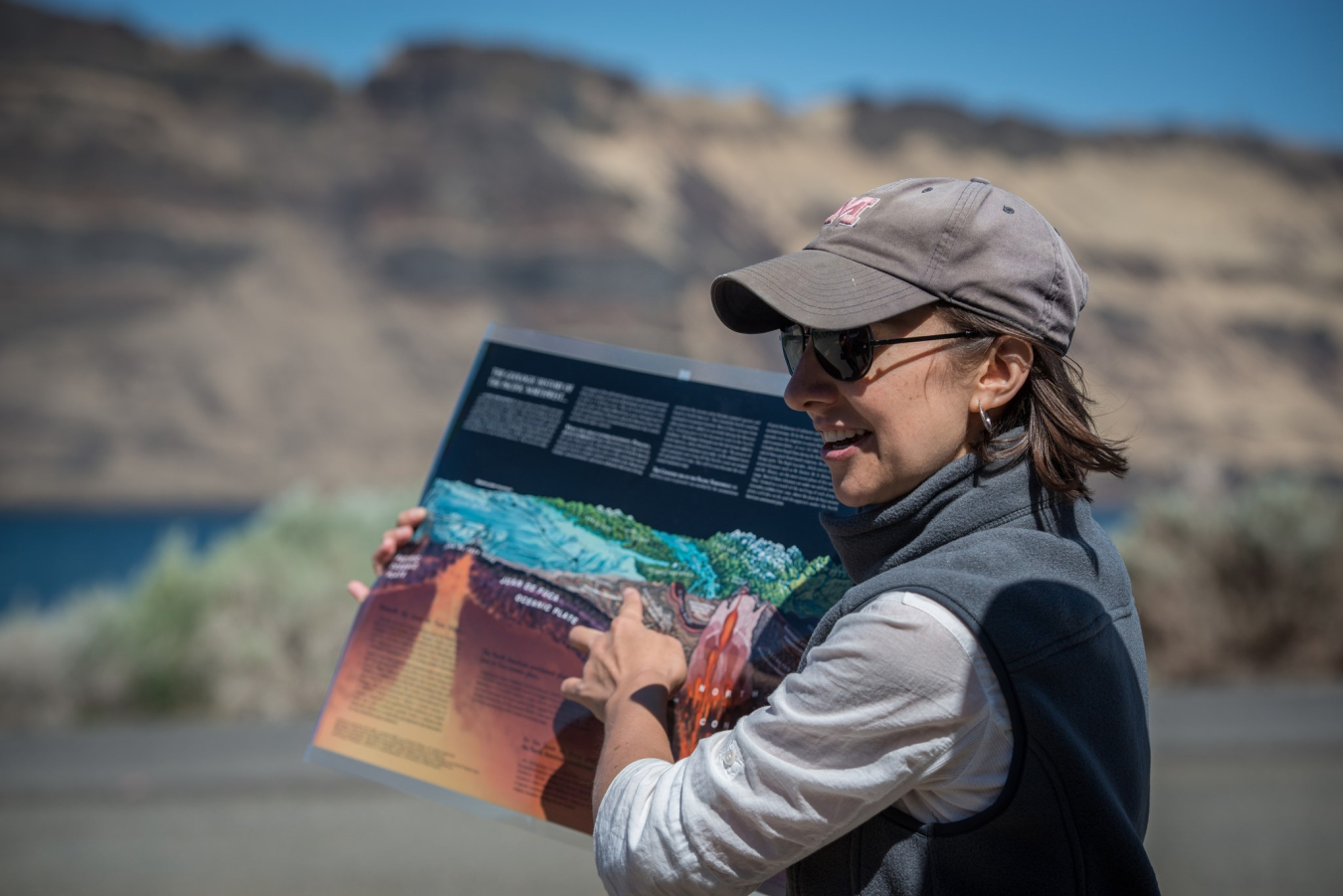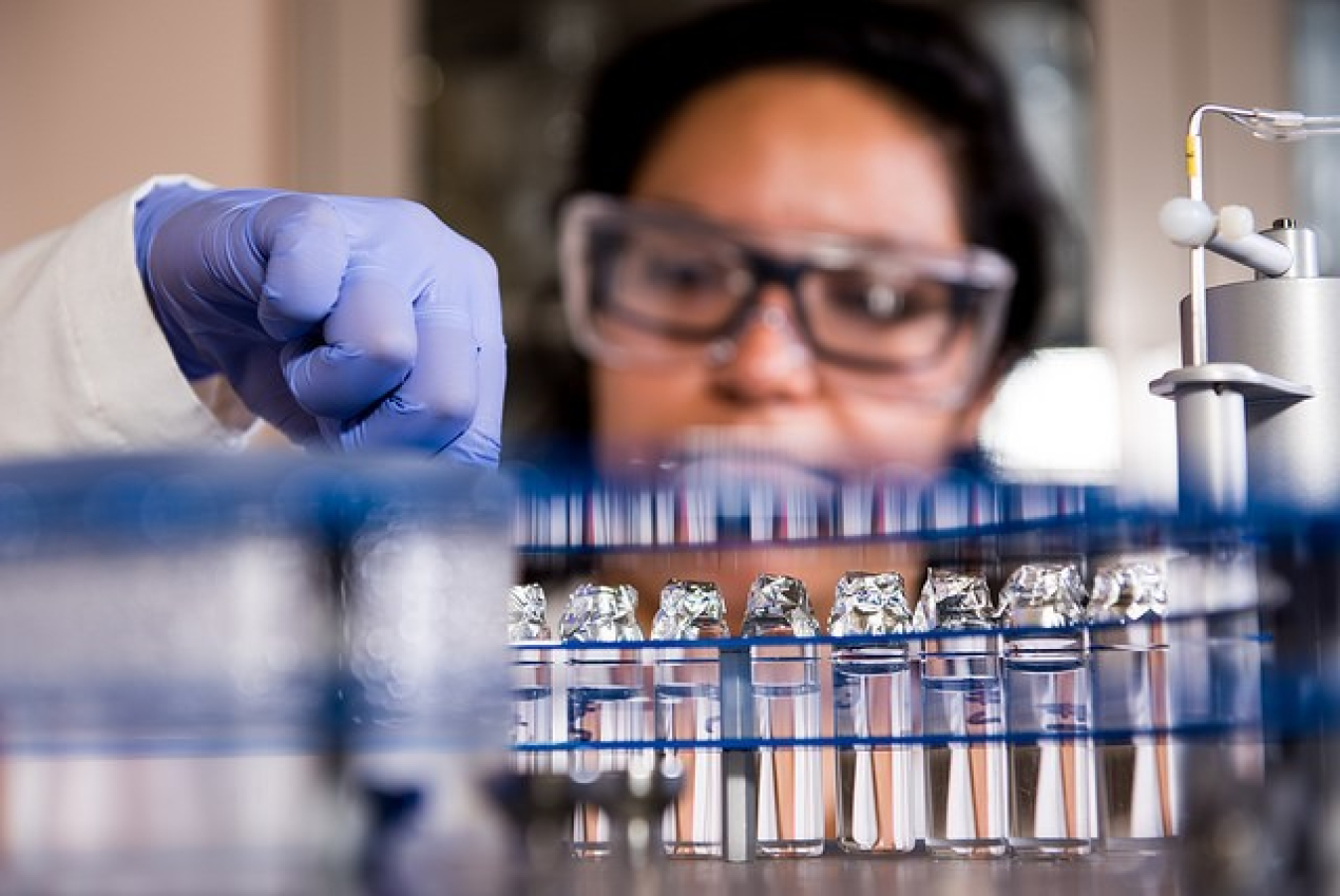DOE, PNNL, and Battelle work together to support efforts that bring educators, families and communities together to energize all students in STEM.
January 30, 2018
Mahatma Gandhi once said, “The future depends on what you do today.” At Pacific Northwest National Laboratory, we believe the ability to address the most challenging problems in science, energy, the environment and national security—both as a national laboratory and as a nation—depends upon our ability to inspire and prepare the next generation of scientists and engineers.
DOE, PNNL, and Battelle work together to support efforts that bring educators, families and communities together to energize all students, especially females and minorities, to achieve STEM literacy. We also look to create relevant, real-world experiences to develop STEM skills. And we seek to build an awareness of how engaging STEM learning can be, while opening doors to future STEM careers.
Here’s a perfect example of these concepts at work: our STEM education professionals leveraged a PNNL-developed smartphone microscope into an innovative opportunity to link scientists, educators and students. First, PNNL researchers and our STEM team made the design specs for the microscope available, free of charge, so that anyone with access to a 3D printer can make one in a matter of minutes for less than $1 each. Then, the STEM education team developed curriculum around how to make your own smartphone microscope and put it to use. On top of that, they created a fun, fast-paced video in which a PNNL researcher describes the importance of microscopy. The team also produced handy postcards with microscopes attached, ready to put into the hands of curious students.

Our efforts with K-12 educators have expanded beyond the classroom to include more hands-on experiences at PNNL. Last summer, two scientists designed a real-world immersion experience for teachers that challenged them to gather information and consider the impacts of siting a wind farm or solar array in a nearby city. The scientists shaped the experience based on what they learned from the STEM team about the Next Generation Science Standards and how those standards relate to their work at PNNL. In this exercise, teachers were tasked with making informed decisions based on scientific evidence—a critical skill for America’s future.
While we understand the importance of increasing the STEM workforce pipeline overall, we are putting particular emphasis on computing sciences and cybersecurity because that pipeline is shrinking even as the demand for those fields grows. In December, PNNL welcomed more than 100 underrepresented high school students to our annual Computing Day. This event gave students an opportunity to explore the role of computing in disaster notification, response and recovery. The Lab also hosts Summer Computer Science Workshops to connect educators to computing sciences, and summer camps for students in topics such as cybersecurity and app design.
We also put our STEM passion into practice through work-based learning opportunities for students —whether working toward a high-school diploma or pursuing a Ph.D. These experiences that allow students to work on real-world problems under the guidance of a laboratory mentor may be just what it takes to convince young people to pursue a career in science and engineering, including some who will choose to work at a National Lab. I know this first hand because I spent three summers as an intern at two different national laboratories while I was a graduate student. If it were not for these internships, I would likely be doing something very different today.
At PNNL and across the DOE National Labs, we are helping prepare the future scientists and engineers who will make exciting discoveries and invent new technologies. They will strengthen America’s ability to compete globally and make the world a better place for all of us. We’re committed to their success. After all, our future depends on it.
Dr. Steven Ashby
Dr. Steven Ashby is the Director of the Pacific Northwest National Laboratory (PNNL), one of the Department of Energy's 17 National Laboratories. He is responsible for establishing the Laboratory's vision and setting its strategic direction. Under his leadership, PNNL's exceptional staff are advancing the frontiers of science and addressing complex challenges in energy, the environment, and national security. In particular, the Laboratory is providing national leadership in climate science, the power grid, nuclear nonproliferation, and environmental remediation.
Dr. Ashby previously served as PNNL's Deputy Director for Science and Technology, and was responsible for integrating PNNL's science and technology capabilities to meet national needs. Toward that goal, he led institutional strategic planning activities, stewarded an $80M discretionary research portfolio, and promoted Laboratory-wide efforts to elevate PNNL's standing in the broader scientific community. He also oversaw the Laboratory's technology commercialization, government relations, and research integrity functions. He served as a member of DOE's Laboratory Operations Board and was past chair of the DOE National Laboratory Chief Research Officers Working Group, which advises the National Laboratory Director's Council on scientific and programmatic issues.
Before joining PNNL in 2008, Dr. Ashby spent nearly 21 years at Lawrence Livermore National Laboratory (LLNL), ultimately serving as Deputy Principal Associate Director for Science and Technology. He previously oversaw the activities of the 500-person Computing Applications and Research Department. Dr. Ashby was the founding director of LLNL's Center for Applied Scientific Computing, which was established in 1996 and has since matured into one of the world's premier scientific computing research organizations.
Dr. Ashby is widely recognized as a leader in computational science and has worked to advance it as a discipline throughout his career. His research focused on computational mathematics and scalable numerical algorithms; he is considered an expert in polynomial iterative methods and adaptive preconditioning techniques for large sparse linear systems. He has published numerous papers, and he has worked in a variety of areas, including large-scale scientific simulation (with application to electromagnetics and subsurface flow and transport), numerical linear algebra, massively parallel computing, and applied computer and data sciences. He remains active in the computational science community, including participation in the Society for Industrial and Applied Mathematics.
In 2013, Dr. Ashby was elected a Fellow of the American Association for the Advancement of Science in the mathematics section for "exceptional technical contributions and scientific leadership in applied mathematics and computational science, particularly the development of novel numerical methods and robust software for parallel computers, as well as for exemplary service to the field of computational science and engineering." He also was elected to the Washington State Academy of Sciences in 2013.
He holds a B.S. in Mathematics/Computer Science from the University of Santa Clara. He earned his M.S. and Ph.D. in Computer Science from the University of Illinois at Urbana-Champaign.

